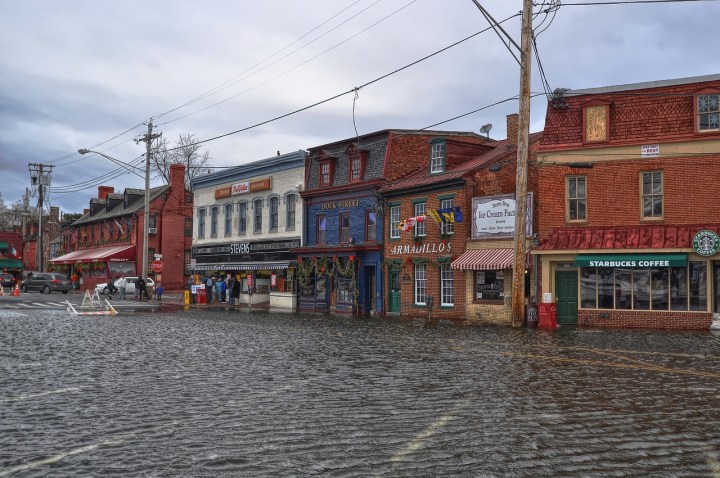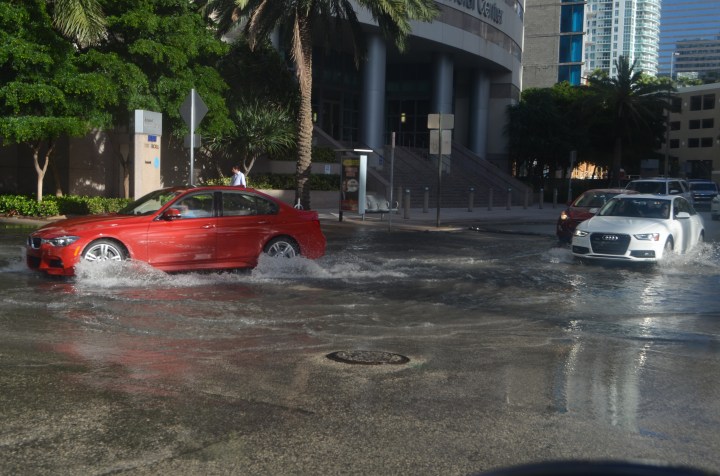Do you think that climate change will personally harm you? The Yale Program on Climate Communication recently asked this question of people across the United States. It turns out that where you live makes a difference. In some coastal communities, sea level rise has already started to creep into daily life, showing up a few times a year in astronomical high tides, or “king tides.” Not surprisingly, places like Miami Beach, Florida, Atlantic City, New Jersey, and Norfolk, Virginia, where tidal flooding has become more than a nuisance, a higher share of people believe that climate change will harm them personally. The ways in which these places are responding to their tidal flooding problems hint at the options that many more coastal communities will take as sea levels rise.

For centuries, coastal communities have understood that high tides vary at certain times of the year and during certain lunar phases. At certain times of the year, the sun, moon, and earth happen to form a line with one another, which aligns the gravitational pulls of the moon and the sun. This combination of forces causes super high tides, variously called “king tides,” “spring tides,” or “moon tides.” As ocean levels rise due to warming waters and melting ice caps, king tides are literally the leading edge of sea level rise in coastal communities. By observing those communities that experience so called “sunny day” flooding, we gain insights into how individuals will act and how communal resources will respond when these tidal floods become an everyday occurrence.
In Miami Beach, a resort town on a barrier island where extreme vulnerability meets high wealth, the city is investing a full half billion dollars to raise street levels and rebuild scores of storm pumps and canal gates. King tides in Miami Beach cause economic losses and massive headaches on a regular basis. In some business areas, the streets have been raised 18 to 24 inches to accommodate high tides without flooding. Properties remain lower than street level, which necessitates massive flood pump infrastructure as well as commercial strategies to make assets like open-air dining attractive. The city is now moving on to raise roads in some residential areas, where the attitude toward living a foot or two below street level may be more tempered. Miami Beach is funding much of this increase internally through bonding and utility rate increases. Other Florida communities are eager to see the outcomes of Miami Beach’s engineering strategies, but few come close to the resources of Miami Beach — an estimated $6 trillion in property over seven square miles of land.

In Norfolk, Virginia, the low-lying topography sets the stage for continual flooding problems caused by high tides as well as precipitation. Leaders and residents alike acknowledge that the flooding has gotten worse. The city and its partners are pursuing a variety of strategies from engineering to communications to economic development. Norfolk received two awards through HUD’s National Disaster Resilience Competition. One award will fund an integrated solution that combines green and grey engineering, including living shorelines. Norfolk also has focused on economic prosperity in sea level rise, launching a $12 million Coastal Resilience Laboratory and Accelerator Center, determined to find economic opportunity in the encroaching water.
In Annapolis, Maryland, owners of historic homes and shops worry each time a king tide brings saltwater into the streets. Like many vulnerable cities, Annapolis is planning and making investments as necessary, but has not taken on a massive engineering project or other strategy yet. When king tides come, public safety officials close off areas deemed unsafe due to tidal flooding, and mobile signs advertise that shops are still open for those willing to walk through a little bit of water. These kinds of tactical responses are likely to spread throughout coastal communities whose historic downtowns are difficult to adapt, even as their residents may be able to move out of the way of rising water.

Many organizations like the North Carolina King Tide Project are collecting pictures of king tides to help communicate about sea level rise. They are hoping that these photos will prompt realistic thinking and acceptance of the near-term inevitability of climate change at the coast. You can view pictures of North Carolina’s king tide events on a Flickr group, and even contribute your own.
About the Author: Amanda Martin, AICP, is a PhD student at UNC Chapel Hill. Originally from Boston, she has worked in policy and planning in Washington, D.C., northern Nevada, New Orleans, and Rhode Island. Amanda’s doctoral research explores how regions or neighborhoods that receive major private or public investment can share that prosperity with low-income communities and communities of color. Her dissertation will answer this question in the context of coastal communities’ recovery from major storms. Amanda holds degrees from Harvard and MIT, and you can follow her tweets on these topics @bornonland

